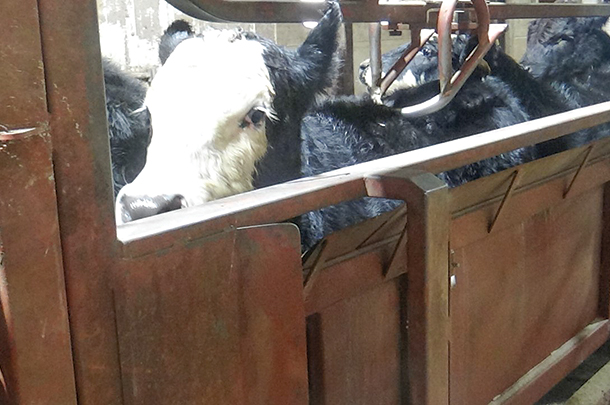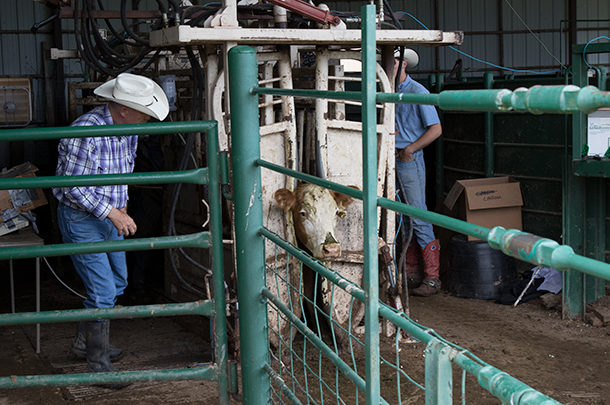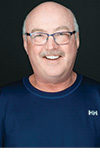Many brands and models of chutes, alleys, tubs or bud boxes populate internet and magazine advertisements offering an extensive variety of features and options. Systems can also be home-designed and constructed. The choices can be overwhelming.
In recent decades, handling facilities were designed for efficiency of the producer with very little consideration of the animal’s instincts and behavior. Systems were large, bulky and oftentimes noisy and built to excess. The goal of these designs appeared to be to move the most amount of cattle through in the least amount of time.
People such as noted animal behavioralist Bud Williams viewed the issue differently and broke the mold when he considered the handling questions. Others have followed his lead and continued to push the philosophies of animal behavior and low-stress handling further into the forefront.
Dr. Tom Noffsinger, consulting veterinarian for Production Animal Consultation said, “We changed a lot of the facility designs we have used over the last 15 or 20 years. We started building those things in 1980, and they didn’t work very well, so we made them taller, and then we thought they were the wrong color and that one curve didn’t work very well, so we put another curve in. They were very frustrating to use.”
Most dedicated cattle people would agree that the basic purpose of a livestock chute and handling system is to hold, sort, direct, position, control and treat. If designed properly, it should reduce handling time and effort plus minimize overall injuries and stress.
This sounds very well and good, but the question of how to accomplish this remains. Should a producer install a manual or hydraulic squeeze, head basket, blind box, calf table, palpation cage or scale, alley and tub system or a version of the Bud box?
An internal assessment is necessary to determine needs. Will these facilities support a large cow-calf ranch; a dairy operation with hundreds of milk cows; a 20,000-head feedlot; or seventeen cows, twelve grass cattle, two dogs and a dozen cats?
Make the squeeze chute safe and usable
First, the squeeze chute is often considered the centerpiece of the handling operation and is a very important investment.
Jennifer Woods, M.Sc., livestock handling specialist, has strong feelings about them. “Start with safety. It is huge for everything.” While squeezes come in many different shapes and variations of handles, ropes and levers, she points out the importance of the positioning of the features. “What has taken me out are the handles that stick out for the head catch. I like the ones that collapse down, because I don’t know how many I have ran into. You also want to make sure your veterinarian has safe access to the animal from the back, and they won’t get trapped or snap an arm if the animal goes down.”
The animal’s safety is also paramount as it must be restrained for efficient procedures to be completed. Woods prefers the sides and openings covered so feet can’t get stuck. She also likes headgates with straight bars, not the V-neck restrainers. “Cattle will choke out when they go down in them and they are harder to get back up. And if you’re using hydraulics, make sure they are not squeezing the animals too tight.”
Another vital consideration for Woods is ease of use. She related a story of hanging off the ground from a head catch that she couldn’t get closed. “You really want something that moves easily and quickly. I like self-catching for handlers working alone, but make sure they are of good quality and that the mechanisms work well.”
Adjust and open the alleyway

Alleyways have also changed over the years. A staple of manufactured alleys 20 years ago was high solid sides with one or two curves placed end to end. Now, most of the newest designs feature straight lines.
Dr. Noffsinger said, “Cattle love to go straight. It’s stressful for an animal, especially a big cow, to stand in a curve. You don’t see them standing like that in nature. I don’t see why you would ask a four-legged animal to do that.”
Going against past norms, he likes a more open look to the walls. “Start with open fence construction so both the animal and the handler can see each other. Cattle crave to see their source of guidance.”
He also believes alley sides should be adjustable and straight for the animals to stand with their legs and feet at the appropriate width apart. “When animals become alarmed or suspicious, they want to place their feet wider, so when we let them do that, it creates confidence.”
Working area footing is also important for cattle. “Flooring should be very friendly to traction and give them secure footing. They need to be confident they can be comfortable and stand straight and balanced.”
Support tubs or Bud boxes with handling skills
When considering tubs or Bud boxes, Dr. Noffsinger sees the answer in the operator’s handling philosophy. “Again, cattle crave to see their source of guidance simultaneously with their destination, and they love to come half around a person. If you know these concepts and how important they are, you will position yourself properly to make use of the existing facility.”
Many producers have had success using all varieties of tubs and holding systems by handling animals in a certain way. Some operators with existing tubs use them with the gates open, simply by adjusting their own positioning and movements.
Dr. Noffsinger sees the question of squeezes and handling systems as more than just the models, colors and brands of equipment. “It’s not so much the design that’s important, but it’s that we create a scenario with these cattle where processing is actually an adventure. Facilities work fine if people understand the cattle’s instincts and sensory systems. It all depends on the humans.” ![]()
PHOTO 1: An advantage to a hydraulic system with a straight-bar head catch is that it can allow room and not possibly choke the cattle. Photo by Mike Dixon.
PHOTO 2: An advantage to alleyway sides with openings is that cattle and handlers can see each other, helping the animals set a direction. Photo courtesy of Daniels Manufacturing.
Bruce Derksen is a freelance writer based in Lacombe, Alberta, Canada.









